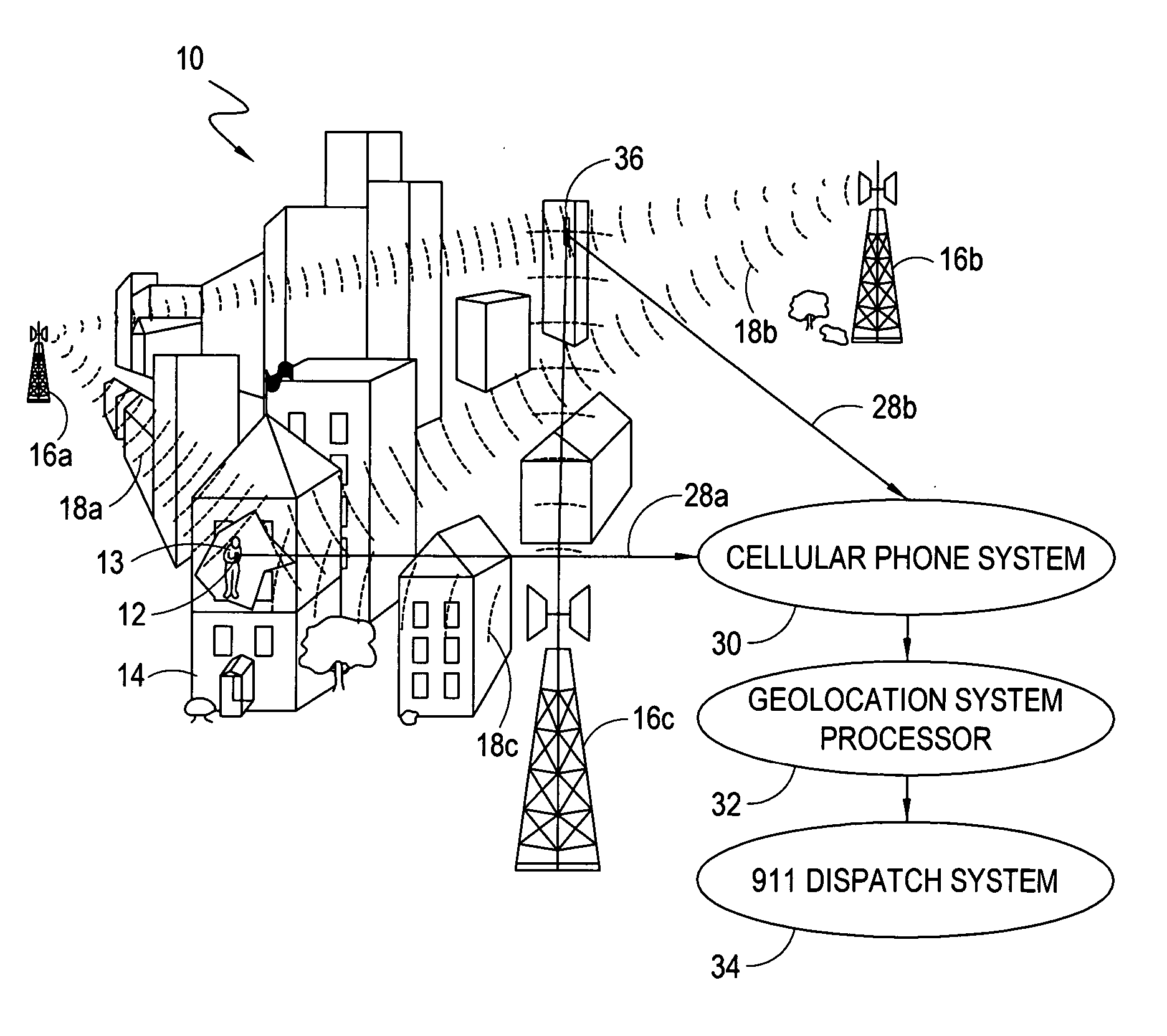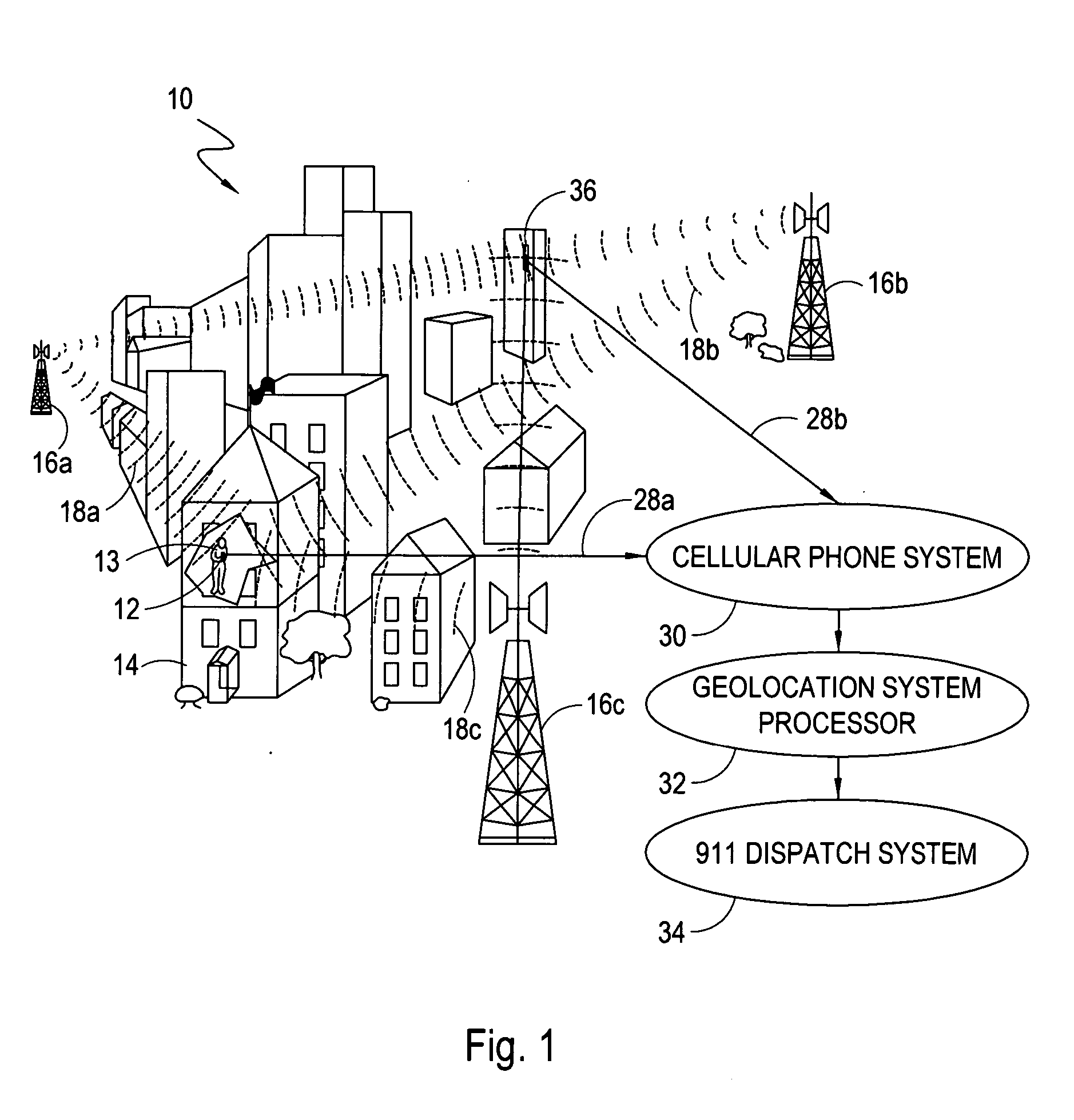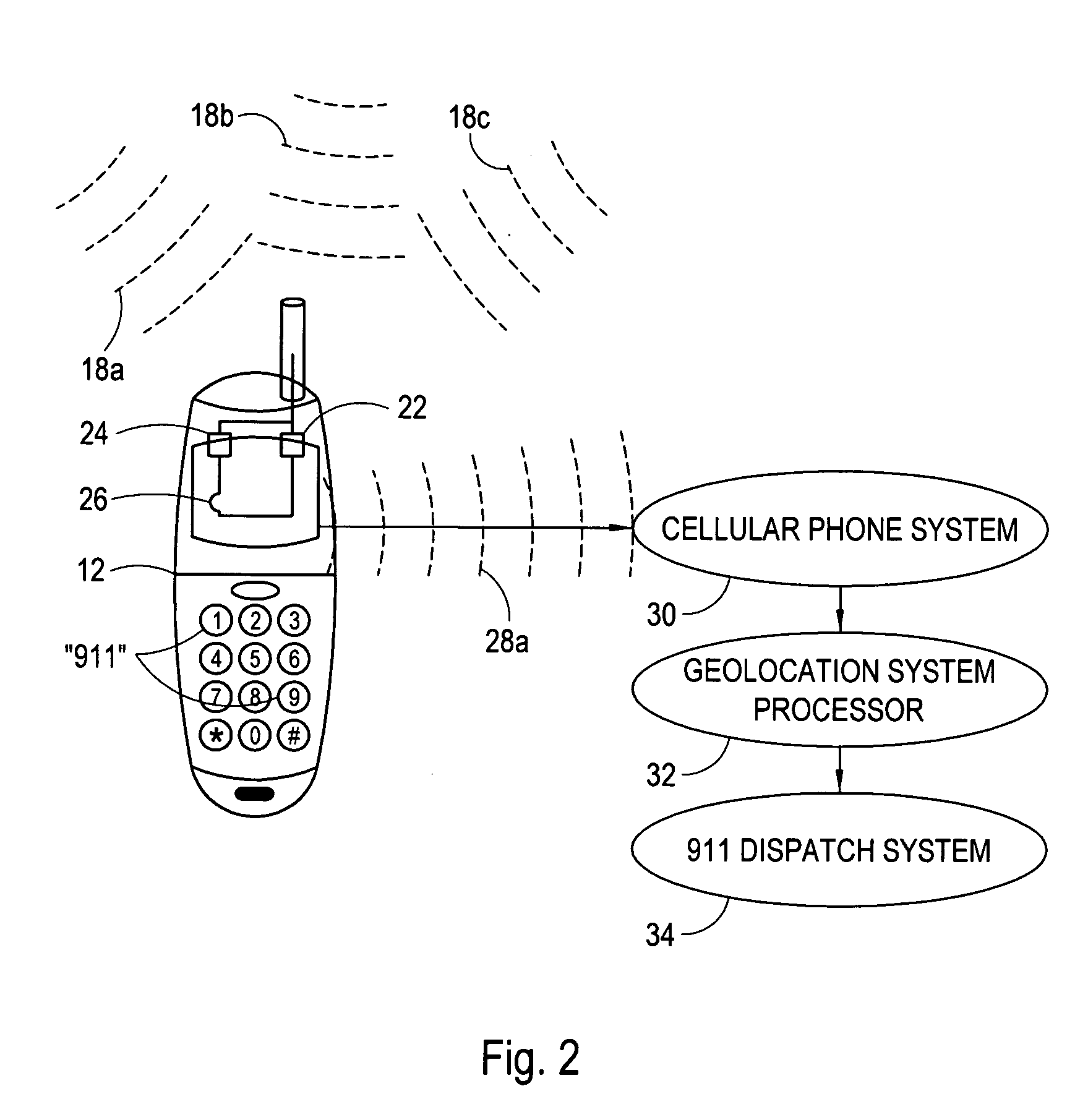Cellular phone geolocation system
a geolocation system and cellular phone technology, applied in the field of cellular phone geolocation systems, can solve the problems of inability to accept location errors, loss of signal strength, and inability to locate users, so as to reduce or eliminate ambiguities, reduce or eliminate phase related ambiguities, and eliminate ambiguities
- Summary
- Abstract
- Description
- Claims
- Application Information
AI Technical Summary
Benefits of technology
Problems solved by technology
Method used
Image
Examples
Embodiment Construction
[0021] Referring initially to FIG. 1, an arrangement of a cellular phone geolocation system is shown and is generally designated 10. The basic object of the system 10 is to determine the location of a cellular phone 12, and if desired the user 13, within a cellular phone service area that can be an urban environment, as shown. Further, this is to be accomplished during periods when the cellular phone 12 is stationary or mobile, outdoors or inside a building such as exemplary building 14.
[0022] In overview, FIG. 1 shows that system 10 includes a plurality of transmitters 16a-c that can be installed on cell towers, as shown. In general, the transmitters 16a,b shown in FIG. 1 can be arbitrarily located as long as the transmitters 16a-c are mutually dispersed and their actual location is known. If possible, it is preferable to position the transmitters 16a-c relative to each other to obtain favorable geometric dilution of precision (GDOP). Although three transmitters 16a-c are shown in...
PUM
 Login to View More
Login to View More Abstract
Description
Claims
Application Information
 Login to View More
Login to View More - R&D
- Intellectual Property
- Life Sciences
- Materials
- Tech Scout
- Unparalleled Data Quality
- Higher Quality Content
- 60% Fewer Hallucinations
Browse by: Latest US Patents, China's latest patents, Technical Efficacy Thesaurus, Application Domain, Technology Topic, Popular Technical Reports.
© 2025 PatSnap. All rights reserved.Legal|Privacy policy|Modern Slavery Act Transparency Statement|Sitemap|About US| Contact US: help@patsnap.com



